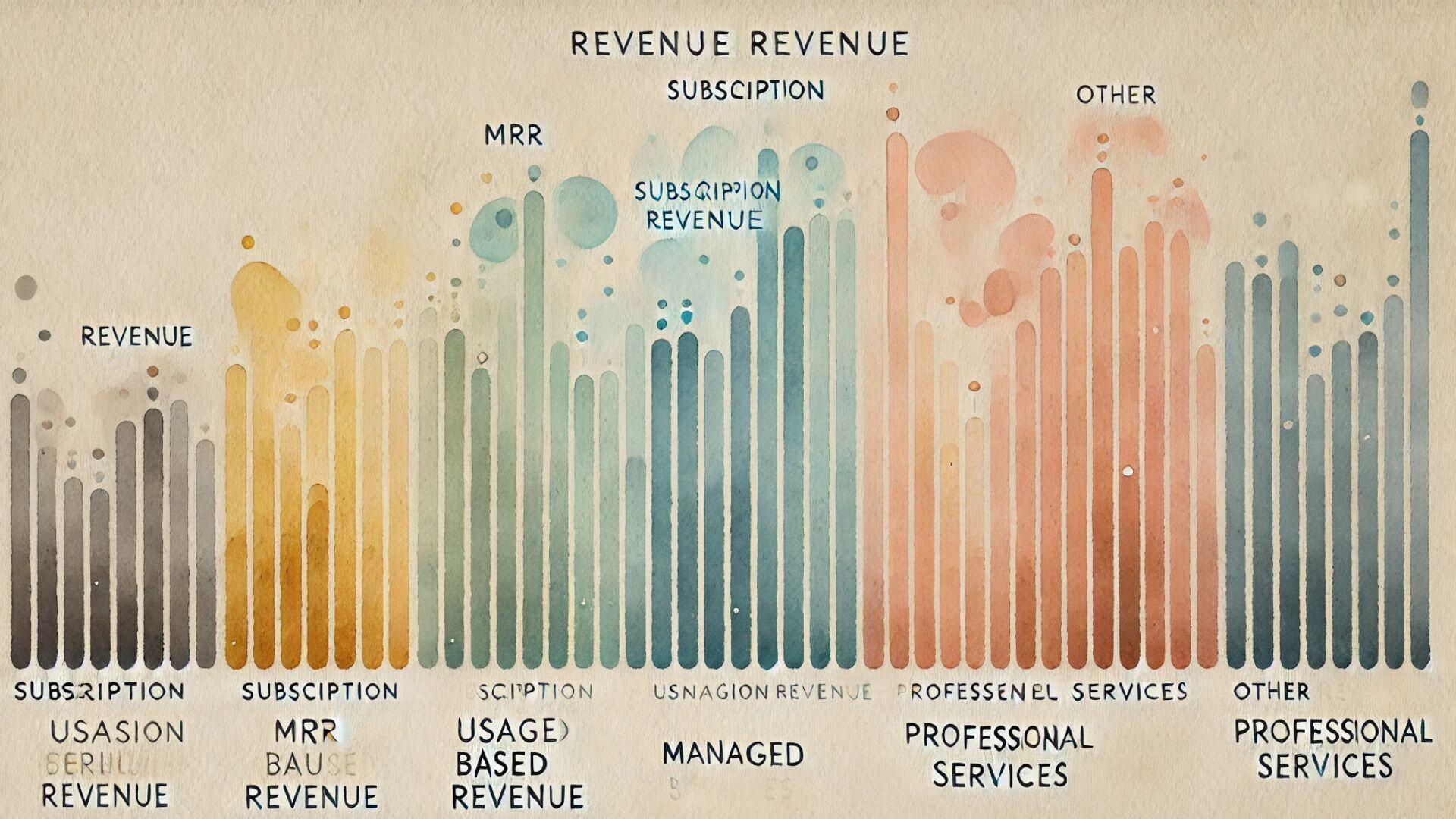
As a marketing agency that helps SaaS startups, we come across a lot of financials when working with founders to sharpen their pitch for investors. One common issue we see again and again? The overstatement of Monthly Recurring Revenue (MRR).
Founders often mix different revenue streams under the MRR umbrella, which can make their financials look better on paper. But here's the thing: investors will see right through that. Some founders genuinely don’t know the difference between MRR and other types of revenue, while others argue that certain types of income, though not strictly recurring, should still count as MRR.
Common Revenue Streams in SaaS (And What’s NOT MRR)
It’s essential to distinguish between the different types of SaaS revenue, especially when reporting MRR. Here are the most common revenue streams and how they stack up against true MRR:
1. Subscription Revenues (MRR)
This is your bread and butter. Subscription revenues are predictable, steady, and occur monthly. They’re the gold standard for SaaS companies and what investors dream of. Whether you’re billing your customers monthly or annually, if the revenue comes from a recurring contract, it counts as MRR. This is the cleanest, clearest number you should focus on.
Example: A SaaS platform like HubSpot CRM charges a flat monthly fee for access to its software, meaning that as long as customers continue their subscription, this revenue will recur.
2. Usage-Based Revenues (Not MRR)
This is revenue that varies based on the customer’s use of the product. While this revenue can repeat, it’s not as predictable as subscription revenue. Since you can’t guarantee that the same customer will use the same amount of your service every month, it doesn’t qualify as MRR.
Example: Think of a cloud service provider like AWS. Customers pay based on the resources they use (storage, compute power, etc.). It’s recurring in a sense, but it fluctuates too much to be considered MRR.
3. Managed Services (Not MRR)
Managed services typically involve ongoing management or support for your software. While this might feel like recurring revenue because you’re invoicing the client regularly, it’s often tied to a specific service agreement and doesn’t have the same predictability as pure subscription revenue.
Example: A SaaS company providing hosting services might charge clients for continuous management and oversight. The revenue might feel steady, but because it’s linked to a service contract rather than a product subscription, it’s not MRR.
4. Professional Services (Definitely Not MRR)
Professional services cover one-time engagements like consulting, implementation, or custom development work. While valuable, this income is not recurring because it’s project-based. Once the project is done, so is the revenue.
Example: A SaaS platform like Monday.com might offer onboarding or custom workflows for a fee. However, this is a one-time service that doesn't repeat, so it’s not MRR.
5. Other Revenues (Not MRR)
This is the "miscellaneous" category. It includes any other income that doesn’t fit into the above categories, like selling old office equipment or assets. Obviously, this isn’t MRR and should never be confused with it.
Example: A company sells old computer hardware or patents. This revenue has nothing to do with ongoing software operations and is purely one-off.
Why Clarity Matters
At first glance, some of these revenue streams might seem like they should be grouped with MRR, but that’s a risky move. Investors and buyers want to see a clear and transparent breakdown of your revenue. They need to be able to easily distinguish between what is truly recurring and what is not. When your P&L statement shows clean, distinct categories, it builds trust and shows that you have a solid grasp of your business’s financial health.
Pro Tip: It’s okay to be proud of your usage-based, managed services, or professional services revenue. Just don’t call them MRR. There’s a time and place to showcase those figures in a positive light, but don’t let them bleed into your MRR number.
How to Report Your MRR Correctly
If you want to impress investors, here’s how you should categorize and report your revenues in your P&L statement:
-
Subscription Revenues: Clearly label this as your true MRR. It’s your most valuable and predictable source of income.
-
Usage-Based Revenues: Distinguish these as separate from MRR. You can show that they are recurring but make sure to note the variability.
-
Managed Services and Professional Services: Report these as separate, non-recurring revenue streams. They’re still important, but they shouldn’t be lumped into your MRR.
-
Other: This is your catch-all for anything that doesn’t fit elsewhere. Be sure to give specifics when necessary, but this is generally a small part of your overall revenue picture.
By breaking down your revenue streams like this, you’ll provide investors with a clear picture of your business. It not only makes you look professional but also builds trust.
Investors Are Watching – Make It Count
Investors want to back companies that have solid, sustainable revenue. Presenting clear financials with distinct revenue streams tells them that you’re a serious founder who knows what’s going on. If your revenue picture is foggy, it makes them nervous—and hesitant to invest.
Business Hub